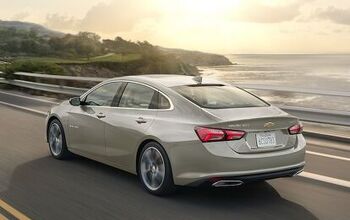The Thirst is Real: Nissan Rogue Sport Gets Worse Fuel Economy Than Larger Rogue Sibling

Less cargo capacity, less horsepower, a lower entry price and … worse fuel economy? That’s the reality for buyers of the 2017 Nissan Rogue Sport, also known as the Nissan Qashqai in Canadian and overseas markets.
The Environmental Protection Agency has released its thirstiness rating for the slightly smaller compact crossover, which was tossed into the Nissan’s North American lineup to fill a narrow gap in the brand’s utility offerings, and some might find the official numbers disappointing.
As we just told you, the entry-level Rogue Sport retails for $2,400 less than the larger Rogue. That $22,380 MSRP buys a front-wheel-drive vehicle with a 2.0-liter four-cylinder and a continuously variable transmission. Pretty standard fare for many vehicles in the segment.
In base trim, the Rogue and Rogue Sport boast the same coefficient of drag (0.33), with the smaller model’s curb weight ringing in at 3,225 pounds — 199 lbs less than the Rogue. At 141 horsepower and 147 lb-ft, the smaller model makes 29 fewer horses and 28 fewer pounds-feet than its 2.5-liter sibling. Both models come equipped with a standard CVT.
While many believe that vehicle size dictates thirstiness, that’s obviously not the case. There’s a myriad of factors that can negatively impact fuel economy. In the Rogue Sport’s case, the combination of smaller engine and very slightly lower curb weight seems to have conspired to shave one mile per gallon from the rating of its more powerful brother.
The Rogue Sport carries a rating of 25 miles per gallon in the city, 32 on the highway, and 28 combined. In contrast, the larger, more powerful, and not all that much more expensive Rogue is rated at 26 mpg city/33 mpg highway/29 mpg combined. For the Rogue Sport, the figures place it below the larger base Mazda CX-5 and Honda CR-V, but above the Toyota RAV4.
Of course, because competitive pricing is Nissan’s forte, cross-shopping buyers are more likely to pay more attention to the numbers that come after “MSRP” than those after “EPA.”
[Image: Nissan]

More by Steph Willems
Latest Car Reviews
Read moreLatest Product Reviews
Read moreRecent Comments
- Daniel J I love my mazda 6. It's getting harder and harder to drive it around where I live as municipalities fail to repair roads. SUVs are just easier to drive with all of the potholes.
- 1995 SC On the plus side, I found a sedan I want to buy
- Teddyc73 As I asked earlier under another article, when did "segment" or "class" become "space"? Does using that term make one feel more sophisticated? If GM's products in other segments...I mean "space" is more profitable then sedans then why shouldn't they discontinue it.
- Robert Absolutely!!! I hate SUV's , I like the better gas milage and better ride and better handling!! Can't take a SUV 55mph into a highway exit ramp! I can in my Malibu and there's more than enough room for 5 and trunk is plenty big enough for me!
- Teddyc73 Since when did automakers or car companies become "OEM". Probably about the same time "segment" or "class" became "space". I wish there were more sedans. I would like an American sedan. However, as others have stated, if they don't sell in large enough quantities to be profitable the automakers...I mean, "OEMs" aren't going to build them. It's simple business.


































Comments
Join the conversation
"Of course, because competitive pricing is Nissan’s forte, cross-shopping buyers are more likely to pay more attention to the numbers that come after “MSRP” than those after “EPA.”" And if I know Nissan customers, they'll be even *more* interested in numbers that come after "Only 72 low, low, monthly payments of "
Or, as Jeremy Clarkson calls it, the Nissan Kumquat. He didn't want to try to pronounce Quarashi, and I don't blame him.